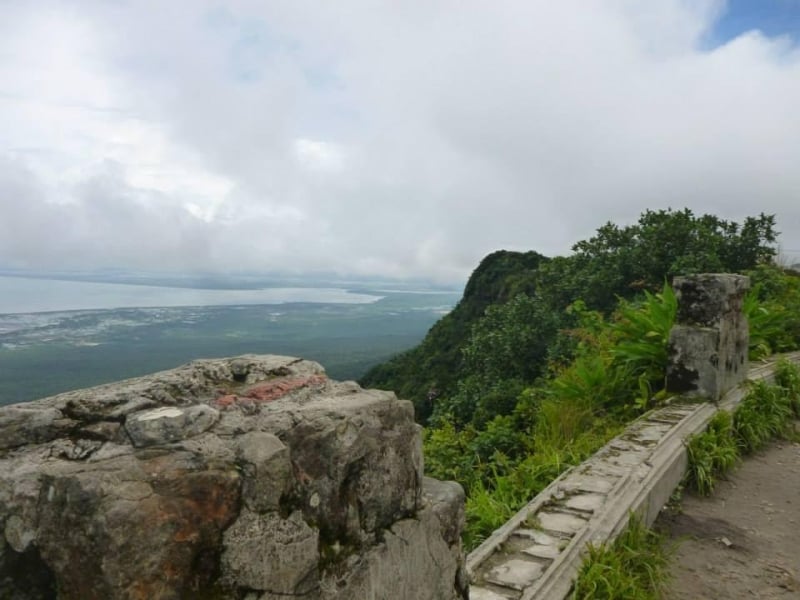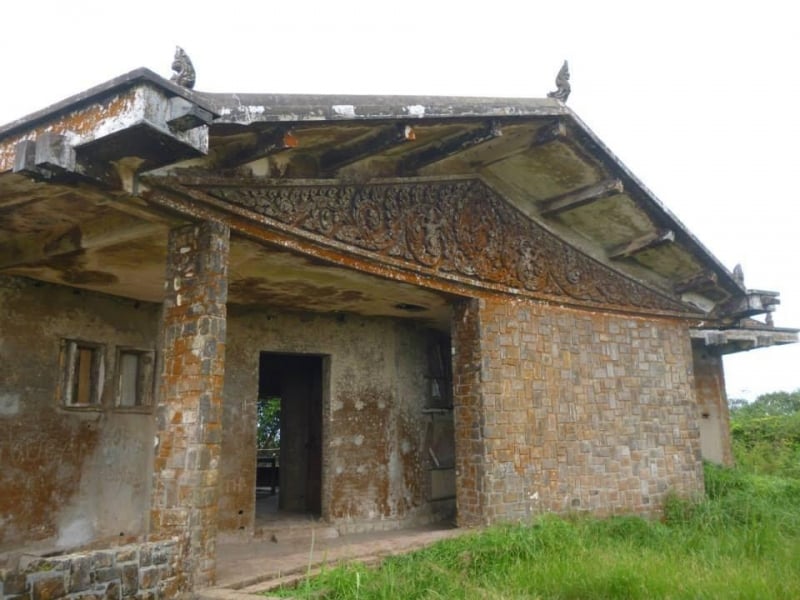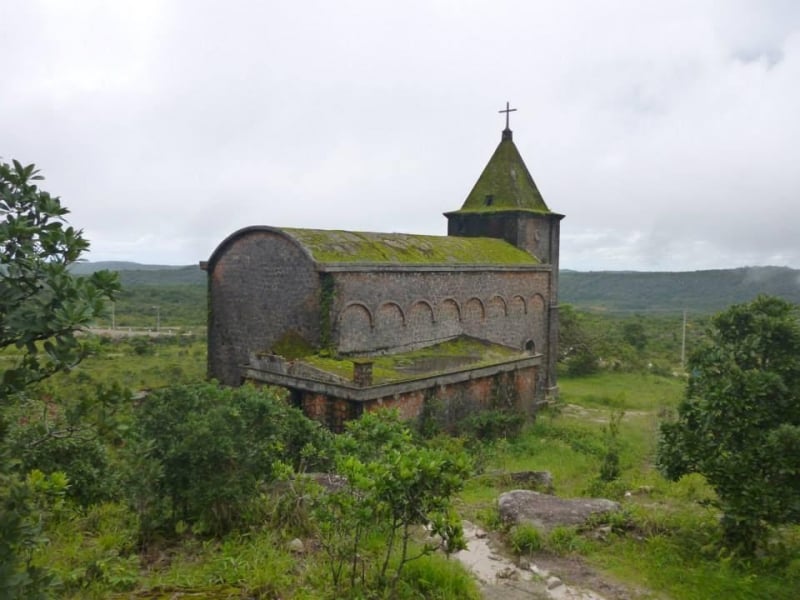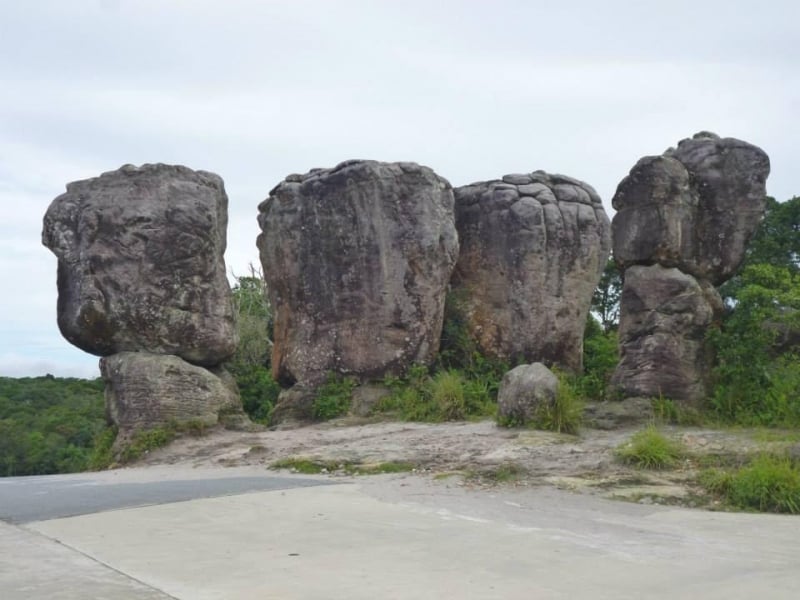Bokor Hill Station in Cambodia was once a popular retreat for the French elite. It is now abandoned, eerie, a shadow of its former self and a stark reminder of the country’s turbulent past. Strangely, those are the very reasons that make it a great daytrip from the nearby Kampot or Kep.
Here’s an overview for travellers who are planning to visit this piece of attraction:
A brief history of Bokor Hill Station

In the first quarter of the 20th century, Bokor Hill Station was built as a cool summertime retreat by the French colonists. Many workers, most of whom are Cambodian indentured labourers, perished during the building of the site.
The opulent hotel and good-time casino proved to be incredibly popular, with numerous people heading up into the hills for leisure and entertainment. The grand building was hastily abandoned by the French just a few years later, however, when the Japanese invaded the country.
The resort really came into its own in the years following the Second World War, attracting wealthy and influential Cambodians. It was a thronging and flourishing destination during the latter years of the 1950s and 1960s. By the early 1970s, the site had been abandoned again. The brutal Khmer Rouge occupied the surrounding countryside and later used the former pleasure retreat as a hideaway in the hills. It was a Khmer Rouge stronghold until the 1990s.
Eventually, calm was restored to the nation, the atrocities become memories of the past, and the broken lands and communities began to rebuild. Bokor Hill Station, now a shell, remains desolate and bleak – a sorrowful symbol of the many hardships the country has endured in the not-so-distant past.
The tourists that visit the site today are very different from those who were first attracted to the area. With no merry-making, luxury rooms, roulette wheels, card tables, and bars, it is a somber relic of a long-ended golden age.
Practicalities: Getting to Bokor Hill Station
Bokor Hill Station lies 36 kilometres from the charming riverside town of Kampot and 65 kilometres from the once-elegant coastal town of Kep. It is possible to rent a scooter and travel to the site independently. The road is bumpy and potholed and the hilly terrain has many curves and bends. Sheer drops tumble away at the edges of the roads in some sections and it can make for a hair-raising ride. Many people prefer to visit the site as part of an organised trip. The bus journey is still a bit nerve-racking, but a lot more comfortable than being on a bike. It might be worth popping a motion sickness tablet before setting off on the steep inclines, bumps, twists, and turns.
A sad relic: Bokor Palace and Hotel

Image credit: Matthew Klein
The largest building in the hills is the former Bokor Palace and Hotel. Built in a colonial style, it is quite difficult to imagine today that the rather drab and washed-out grey building was once a place of fun and laughter. Look closely, though, and you’ll spot the odd memory of grandeur among the dust and graffiti. Cast your gaze downwards and you’ll notice that elegant and ornate tiles, chipped and broken in places, still cover the floors. The walls are bare, though, and the windows are gaping holes, now devoid of glass. Rooms have long been relieved of the trappings of luxury that once filled them. The views from the balconies are as scenic as they would have been in the past, but the atmosphere is certainly less jovial. You can almost hear the whispers of the ghosts of time as you wander through the derelict complex.
A former royal retreat: Black Palace

It is hard to imagine that the Black Palace was once used by royalty as a peaceful sanctuary in the hills. This is where King Sisowath Monivong chose to live out his days, and it was also a popular pleasure spot with King Sihanouk. Known in the local language as Veang Khmao, the Black Palace took its name from the black wood that was originally used, in conjunction with bricks, for its construction. The wood has long rotted or been removed, leaving a sad and all-but-gutted brick building. It’s sure that few people, let alone royalty, would want to spend a night here now. Moss clings to the walls and pathways and weeds grow through the cracks. Lichen adds an interesting touch to the ornate carvings. Nature is working hard to reclaim its land. Graffiti is daubed across the walls, some of it quite attractive and creative.
A deserted place of worship: Bokor Church

Once a sacred place of worship, perhaps visited by ardent gamblers and drinkers seeking atonement for sins and some divine inspiration at the card tables, the small church now stands decrepit and decaying. Though a cross still rises from the tower, few religious symbols can be seen inside the moss-covered walls. Surrounded by greenery, with the twittering of birds and the clacking of insects filling the air, the church somehow manages to exude a calm sense of tranquility. Pay closer attention, however, and you’ll see that the walls have been left wounded and scarred by bullet holes. Desecrated and defiled, even holy sanctuaries weren’t places of safety during Cambodia’s tumultuous past.
A nature galore: Preah Monivong National Park

Several hiking trails lead through the national park, ranging in lengths and difficulty levels. Most aren’t so well marked and it’s easy to get disoriented and lost; it’s recommended to explore with a local guide. Other tips include wearing sturdy footwear and taking warm clothes; the temperature drops can be very noticeable and you’ll likely feel chilly. There are also trails that are suitable for mountain biking through wildlife-rich areas. A variety of flora and fauna lives in the rolling hills, including wild elephants and tigers. Though the chances of bumping into a large animal are slim, be vigilant, especially in the evenings. Birds, reptiles, rodents and insects are abundant. The park offers glorious views of the surrounding areas, although a thick swirl of mist might hang in the air. Especially enchanting during the rainy season, when at its fullest, Popokvil Waterfall makes for a pleasant visit. Don’t miss seeing the unusual Veal Sre Mouy Roy, also known as the 100 Rice Fields. Far from being filled with real rice, the fields are actually rock fields that resemble rice paddies.
Other attractions in the locale
If you want to really feel at one with the hills and nature, check out the meditation area in the dense jungle. There’s a large legend-surrounded statue of Lok Yaey Mao, the guardian of fishermen, hunters, and explorers. Wat Sampove Pram is another interesting sight. If you’re feeling lucky, head to the new and flashy Thansur Bokor Highland Casino. Trying to rekindle the area’s former appeal, the glitzy casino offers lots of fun (as well as the chance to blow your entire travel budget if you’re not savvy!).
Hop back in time and combine history and nature with a visit to Bokor Hill Station.




